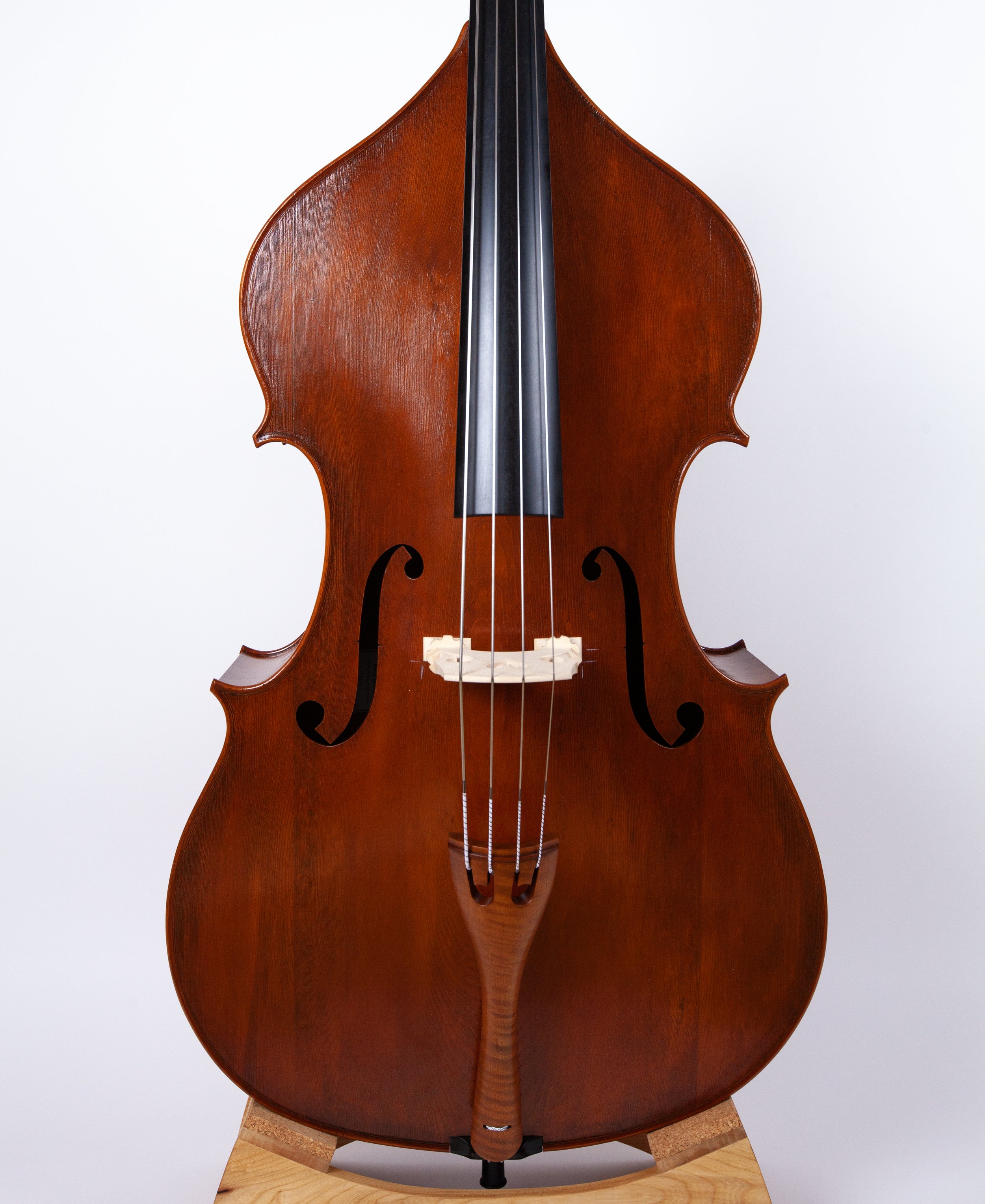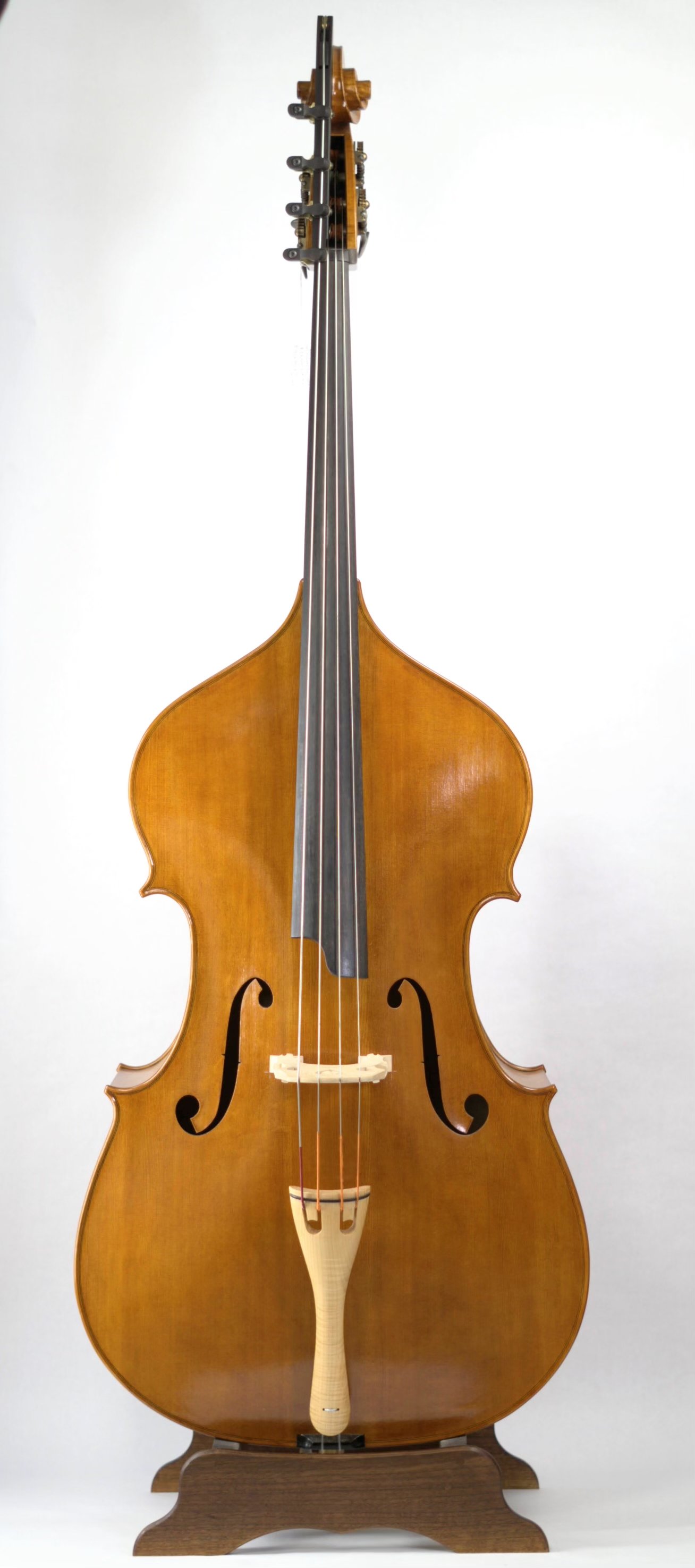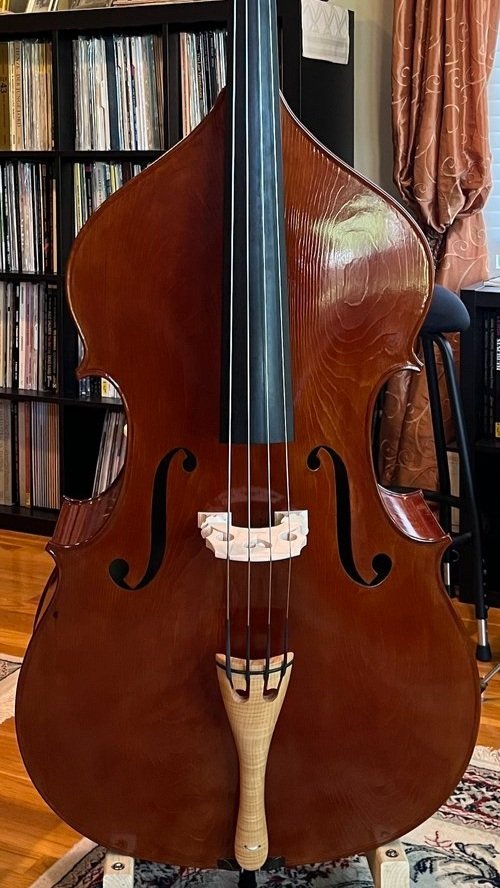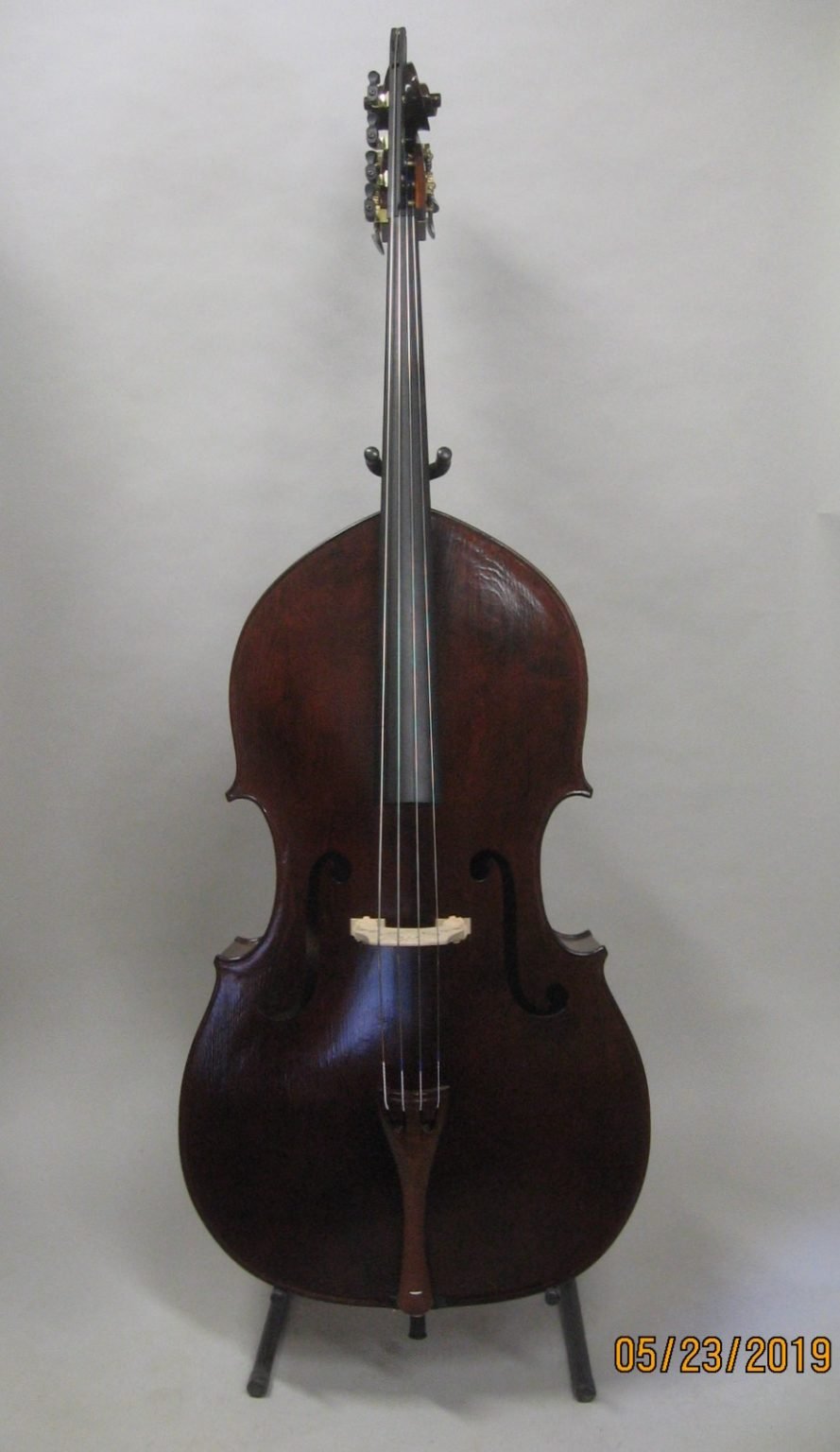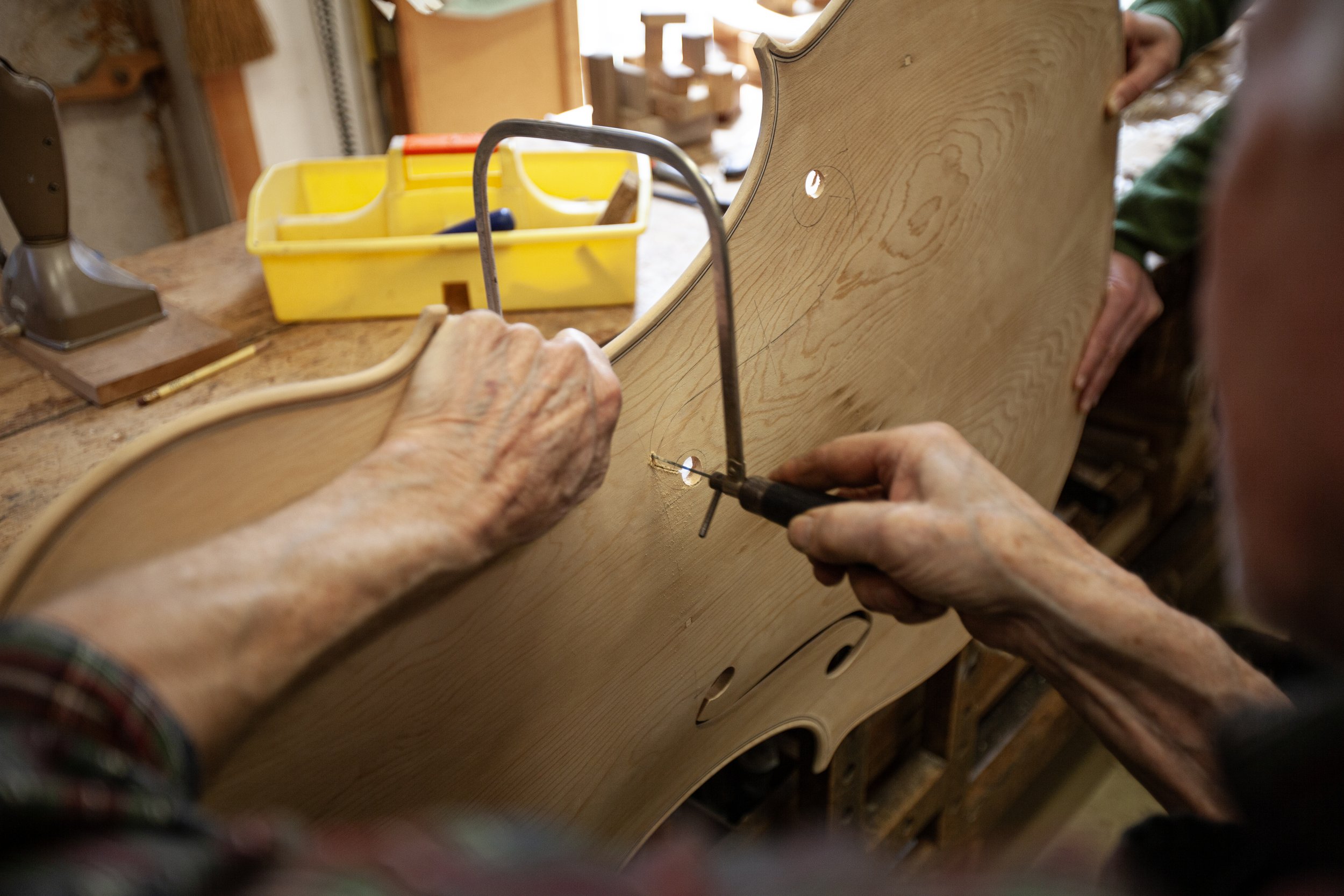
Handmade Basses
Robbie has developed a method that results in an instrument that has a rich bottom and, perhaps more importantly, a rich quality in the upper register—an “Italianate” sound. All handmade McIntosh basses share this quality.
For more photos and specifications about any of our handmade basses for sale, click on an image below.
Learn more about basses for purchase:
Fine Lutherie
Robbie has been building basses for 25 years. Our instruments are finely crafted and made from carefully selected and seasoned woods, some from reclaimed wood from old buildings, some from locally sourced lumber that has been sawn and seasoned for several years. The seasoning process enhances the wood’s stability and increases its resilience under the stresses of annual weather cycles. Robbie’s basses have won several awards for tone in VSA and ISB makers competitions. Helen’s first bass, made in collaboration with Robbie, was one of these award winners!
-
We have made reproductions of several venerable basses:
If you have a beloved instrument that you’re hesitant to take on the road or bring into the orchestra pit, we can make a copy that will be faithful to the dimensions and appearance of the original. This could also be the opportunity to make changes to its geometry, such as overstand and string length, that can make it easier to play.
We can also customize the models we are currently building to suit your needs. If the instrument you’re playing is troublesome in some way, we can help you decide what needs to change, and we can modify your bass or build a new one to your specifications.
-
I started building basses in 2000. At first, building a bass seemed like the ultimate woodworking challenge. It is still a challenge, but I’ve come to realize that the woodworking is only the first part of making what a bass ultimately becomes. The varnish, the setup, and the selected accessories all contribute to its personality. My instincts have been informed by the many fine basses that I’ve repaired or restored, and I’ve developed a method that results in an instrument that has a rich bottom and, perhaps more importantly, a rich quality in the upper register, a sound that matches the richness of the lower strings, a quality that has been described as “Italianate”. What leaves my shop is a raw instrument whose full potential has yet to be discovered. It will take years of playing for this new instrument to come into its own. The player who undertakes this project will “teach” it to sound in a personal way, and in so doing is as much a midwife as I am in bringing a new instrument to life.
-
I’ve always been interested in using local materials in my woodworking. My first four basses were the beginning of what I call the “Taconic Series”. The Taconic Mountains, once as high as the Alps but now eroded to modest hills and rounded peaks, are the ones I look at every day from my vantage point here in Cambridge, New York. On their forested slopes and valleys grow many species of trees that are useful to artisans of all stripes.
Basses in the Taconic Series have included sugar maple, red maple, cottonwood, black cherry, white elm, and black walnut for backs and ribs; white pine and red spruce for tops; willow, tulip poplar, aspen, spruce, and basswood for blocks and linings; red maple and sugar maple for necks.
-
Robbie’s has made his favorite design, a copy of the original 5/8 Alvisio Piattellini ca. 1791, four times, and Helen has made it twice. He has also made a 3/4 size model of a similar design. The sloping shoulders and the crease in the upper back that narrows the ribs at the neck block make this model easy to get around. It is a round back and has the signature McIntosh sound, a warm tone that projects well across all the strings.



